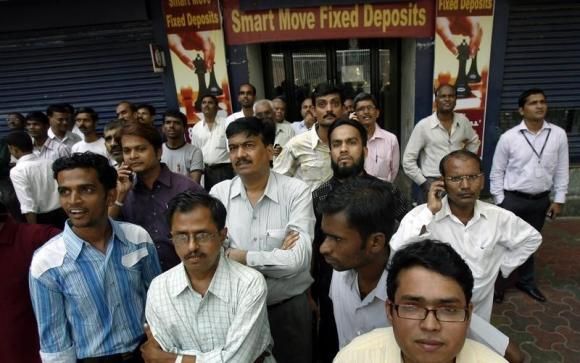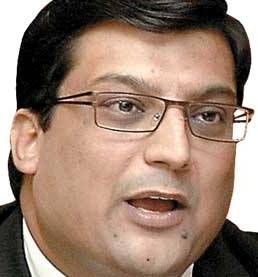 | « Back to article | Print this article |
 India has been a core portfolio holding for emerging market funds.
India has been a core portfolio holding for emerging market funds.
Whatever be the Bihar poll outcome, it will provide positive impetus to policy making, says Navneet Munot, below, chief investment officer, SBI Mutual Fund.
Similarly, a likely rate rise by the US Federal Reserve in December could remove uncertainty and help the market stabilise, he tells Business Standard.
Excerpts:
The markets have come off their highs and volatility has increased. When can one expect some stability?
The volatility has nothing much to do with local events. Capital markets across the globe are impacted by the swings in capital flows -- across assets classes.
India has been a core portfolio holding for emerging market funds.
Strengthening of the dollar, falling commodities and economic slowdown are putting tremendous pressure on emerging market currencies and equities.
India outperformed EM peers in the first leg but can’t remain insulated as EM funds continue to witness further redemptions.
We expect the current volatility to remain, primarily on the global backdrop of slow growth in developed economies, the China slowdown, falling EM currencies, and socio-political issues in Russian and Middle Eastern territories.
Foreign outflows so far have been counterbalanced by record flows from domestic institutions.
We expect the markets to stabilise once the event shocks get absorbed, hopefully before the end of the calendar year.
The surprise 50-basis point rate cut by the Reserve Bank hasn't had a big impact on the market.
The interest rate is one of the variables in the expected recovery.
As things stand, there exist challenges in terms of getting the economy back on track. The real estate sector is strained.
Banks' balance sheets are stressed with non-performing assets from previous cycle excesses.
The monsoon, too, has been below average. Rural consumption would struggle on the back of lower MSP (minimum support price) increase and poor monsoon.
This has a counterbalance from better balance sheets of households, steady flow of FDI (foreign direct investment) and an initial trickle from government spending.
The government needs to push its envelope further in Parliament to get the GST (goods and services tax) reform on track.
Any recovery would be dependent on the timing and extent of investments from the public sector.
What will be the impact of near-term events like the Bihar election outcome and the US Federal Reserve meeting on the market?
Irrespective of the outcome of the Bihar polls, it only stands to provide positive impetus to policy making.
While victory for the ruling coalition stands as a market desire, even a failure to get power would still be a moment of truth for introspection and further accelerate the economic agenda.
The same holds for the event for Fed rate hike. It only would remove the uncertainty.
We expect markets to stabilise once the event shock of such unwinding gets absorbed - hopefully before the end of the calendar year. Both these events should be used by investors to extend their exposures to Indian equities.  Are there sectors or pockets that offer good value in this market?
Are there sectors or pockets that offer good value in this market?
In a volatile world, market is giving premium to visibility and consistency of return. Any growth thus far has been a bonus.
The four key themes that drive India are digitisation, globalisation, emerging demography and enforced governance.
Each of these variables over the medium- to long-term possesses disruptive traits that can challenge the current market structure.
What is your take on the second quarter earning season?
While analysing corporate earnings, one need to consider the fact that at least one-third of the broad market earnings are impacted by the external environment.
The nominal GDP growth is in single digit due to the fall in GDP deflator (inflation), which is also a guiding variable for subdued topline growth for the corporate sector.
The commentaries thus far have been weak in terms of volume growth. Initial results suggest that most of the drag on topline is absorbed by better gross margins.
Sectors such as auto and consumer are benefiting from the commodity price softness. Information technology companies have lowered their guidance in spite of witnessing better deal wins.
We expect the current quarter to witness bottoming out of the earnings downgrade cycle.
The period gone by has shaped an environment for factor cost efficiency in terms of lower wages, lower rentals, lower input costs and lower borrowing costs.
As economic recovery picks up, we feel the earnings cycle should follow as corporates start benefiting both in terms of volumes and margins.